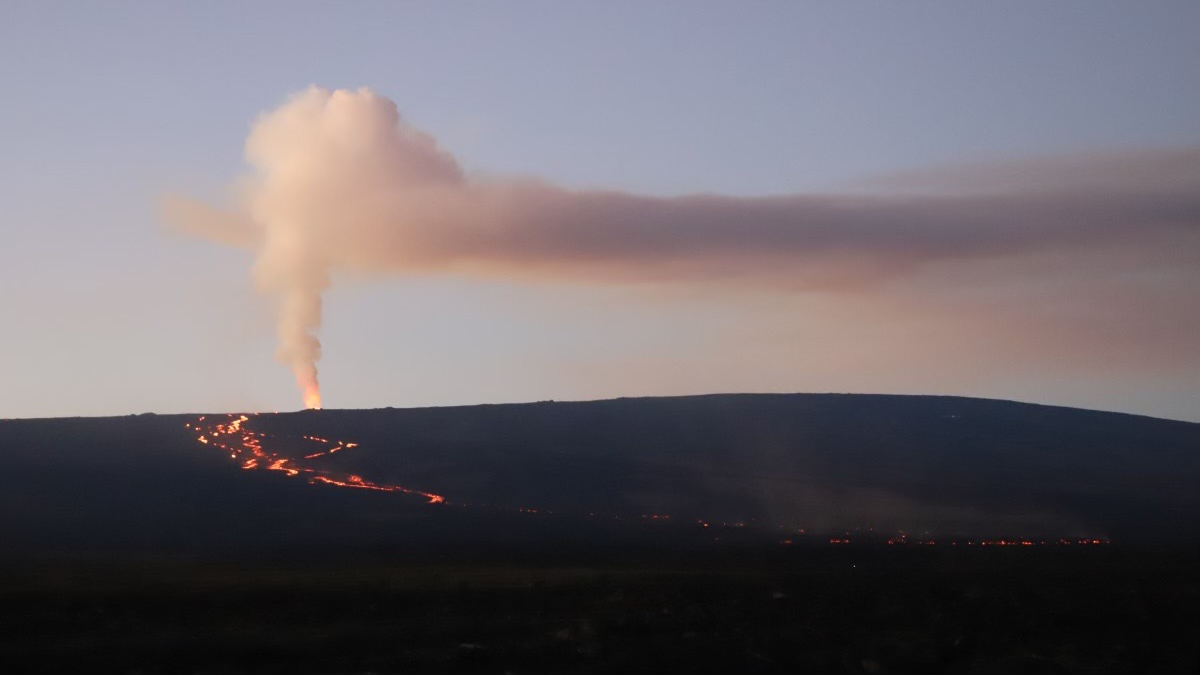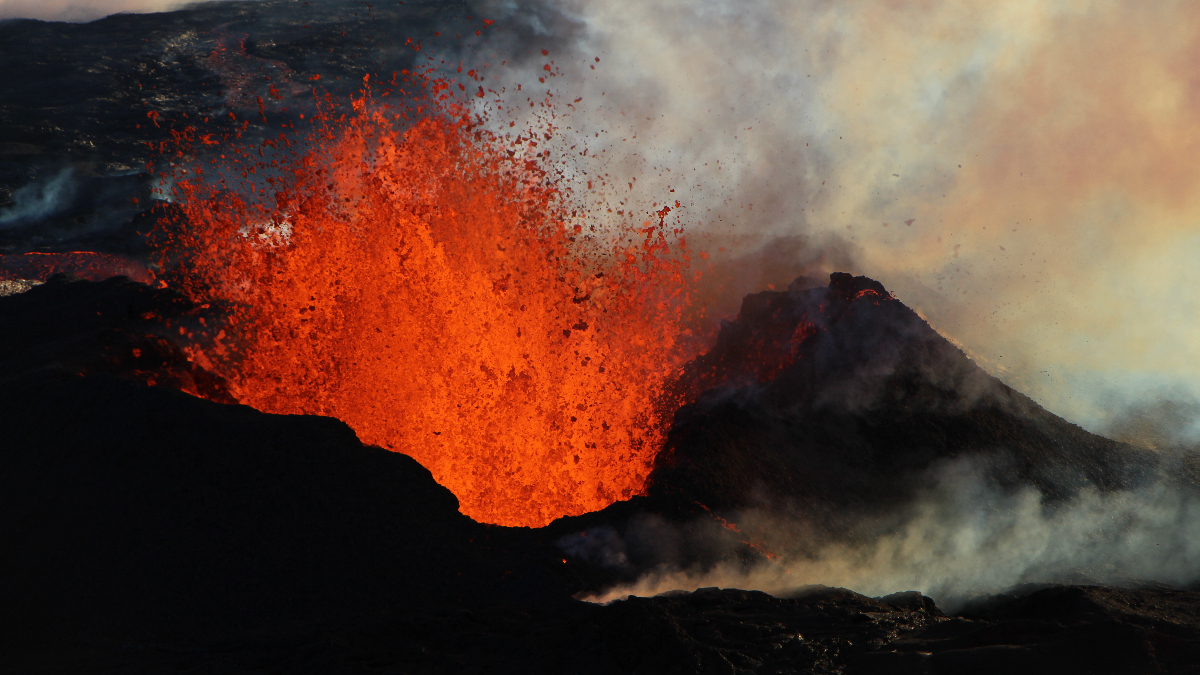
USGS: “Taken from the intersection of the Daniel K. Inouye Highway and the old saddle road, this telephoto photo shows the main flow front of fissure 3 from Mauna Loa’s Northeast Rift Zone eruption. A plume of volcanic gas rises high above the erupting vent and is being wafted in a west direction.” (USGS photo by H. Dietterich)
(BIVN) – The eruption of Mauna Loa continues on Hawaiʻi island, with two active fissures on the Northeast Rift Zone. The current USGS Volcano Alert Level remains at WARNING / RED.
Lava is slowly moving to the north in the direction of the Daniel K. Inoyue Highway, and is currently over two miles away.
The Hawai‘i Emergency Management Agency says it has deployed a team to Hilo to assist with the County’s emergency response to the eruption.
“While the lava is moving very slowly at the moment and doesn’t pose an imminent hazard to populated areas, it’s still a hazard with huge destructive potential,” said HI-EMA administrator Luke Meyers, who traveled to Hilo Thursday to meet with county officials . “We wouldn’t be doing our jobs if we didn’t work to define the possible impacts and recommend ways to reduce or eliminate them,” Meyers said.
From the USGS Hawaiian Volcano Observatory at 9:52 a.m. HST:
The Northeast Rift Zone eruption of Mauna Loa continues, with one active fissure, fissure 3, feeding a lava flow downslope. Fissure 4 is sluggish, and fissures 1 and 2 are no longer active.
Fissure 3 is generating a lava flow traveling to the north toward the Daniel K. Inouye Highway (Saddle Road) that has reached relatively flatter ground and slowed down significantly over the past couple of days, as expected. Over the past 24 hours, the lava flow has advanced at a rate of about 150 feet per hour (45 meters per hour). As of 7:00 a.m. HST this morning, the flow front is about 2.7 miles (4.3 km) from the Daniel K. Inouye Highway (Saddle Road).
Fissure 4 continues to be active, but with very little eruptive activity observed this morning.
Advance rates may be highly variable over the coming days and weeks due to the way lava is emplaced on flat ground. On flat ground, lava flows spread out and inflate. Individual lobes may advance quickly, and then stall. Additional breakouts may occur if lava channels get clogged upslope. There are many variables at play and both the direction and timing of flow advance are expected to change over periods of hours to days, making it difficult to estimate when or if the flow will impact Daniel K. Inouye Highway.

USGS: “Taken from the intersection of the Daniel K. Inouye Highway and the old saddle road, USGS scientists take laser rangefinder measurements of the main flow front of fissure 3 from Mauna Loa’s Northeast Rift Zone eruption to determine where it is relative to the highway.” (USGs photo by J. Ball)
Volcanic gas plumes are lofting high and vertically into the atmosphere before being blown to the west at high altitude, generating vog in areas downwind. Vog information can be found at vog.ivhhn.org. Pele’s hair (strands of volcanic glass) fragments are being wafted great distances and have been reported as far the Mauna Kea Visitor Information Station.
Sulfur dioxide (SO2) emission rates of approximately 180,000 tonnes per day (t/d) were measured on December 1, 2022.
Tremor (a signal associated with subsurface fluid movement) continues in the location of the currently active fissures. This indicates that magma is still being supplied to the fissure, and activity is likely to continue as long as we see this signal.
There is no active lava within Moku’āweoweo caldera, and the Southwest Rift Zone is not erupting. We do not expect any eruptive activity outside the Northeast Rift Zone. No property is at risk currently.


by Big Island Video News1:25 pm
on at
STORY SUMMARY
HAWAIʻI ISLAND - As of Friday morning, the slow-moving flow front was about 2.7 miles from the Daniel K. Inouye Highway, aka Saddle Road.